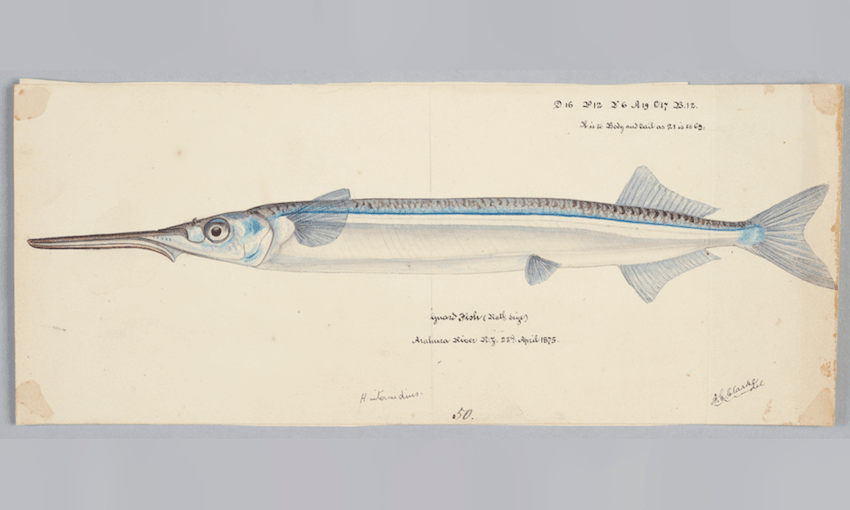We’ve started this month with the fullness of the Rakaunui moon beaming and guiding us into Whiringa-ā-nuku (October) and Matiti Hana (the second summer phase). The native puawānanga (clematis) bear bright white flowers and kōrero of tākeke (Piper fish) and ngā korowhiti o Tangaroa (leaping mullet) emerge from our tūpuna stories.
Maramataka is rooted in knowledge around tohu in the sea, land and the sky. The movement of tides, stars, fish, animals, birds, winds, plants and all the different parts of the taiao (environment) are connected. A particular tohu for Whiringa-ā-nuku is the coming of the tākeke (piper fish eggs) which come ashore for a very short period of time. They are particularly important because of their connection and place in a larger fish food chain with kahawai, kingfish and marlin. Tākeke come ashore during Matiti Muramura, when the Rehua star shines bright in the sky, during a turning tide around the Oturu moon. As our kaumatua say “everything is connected and nothing is done in isolation” and this is an example of the maramataka in action.
Key dates
Oturu, Rakaunui and Rakau mā tohi: 1-3 October – The highest energy days of the month and full moon. This is usually an ideal time for high activity, events, sports and planting.
Korekore te whiawhia, Korekore te rawea and Korekore piri ngā tangaroa: 6 – 8 October – These are reflective, lower energy days, like Whiro, better suited for planning, reflecting and calm activities
Tangaroa a mua, Tangaroa a roto and Tangaroa kiokio: 9 – 11 October – Great fishing, planting and fruitful days. Get through your to-do lists. These days are usually all-around productive.
Mutuwhenua, Whiro and Tirea: 15 – 17 October – This is a reflective time. Take it easy, kia tūpato, rest and plan.
Click here to learn how to use the maramataka dial and to download your own.
Utunga (reciprocity days)
Oike (5 October) – Give back day to Papatūānuku (mother earth) by cleaning the whenua, the garden and so on.
Otane (12 October) – Give back day to Tane Mahuta (forest) to the trees, birds and plants
Ouenuku (19 October) – Give back to Ranginui (sky father) by elevating our thoughts to the heavens to enhance relationships with whānau, friends and community.
Huna (25 October) – Give back day to Tangaroa (ocean) by picking up rubbish on the beach and reusing or saving water.
Tohu in Whiringa-ā-nuku
Tohu o te whenua (signs on land)
Puawānanga (Clematis flower) and many other white flowers are a clear sign of Matiti Hana. There are seven summer phases which are connected and overlap from one to the next.
Tohu o te rangi (signs in the sky)
The next stars to appear are Te Kakau (Regulus), followed in November by Whiti Kaupeka (Spica).
Tohu o te moana (signs in the water)
Whitebait come to an end and kanae (mullet) begin to run again, also known as “ngā tama korowhiti o Tangaroa” (the leaping of the mullet).
